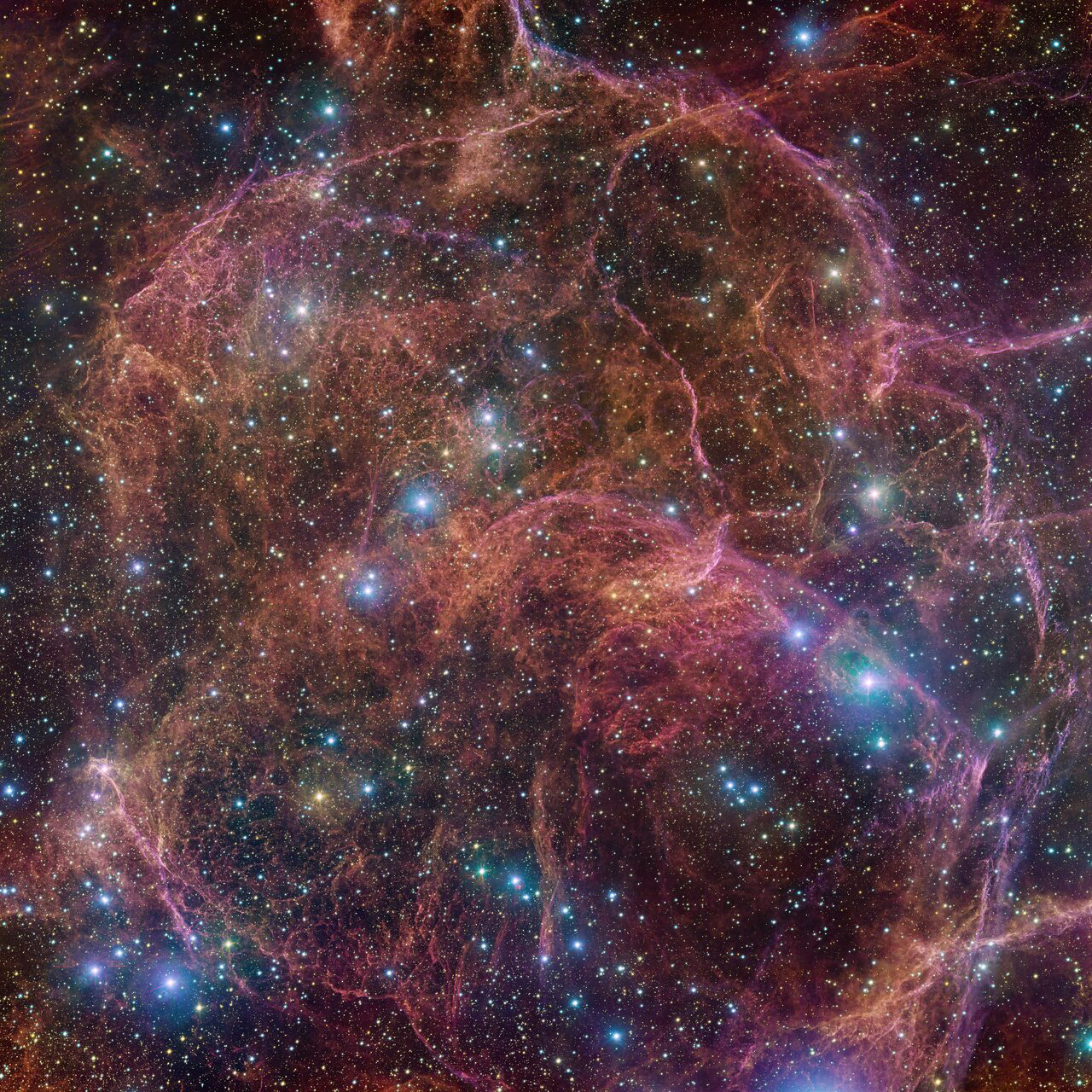The European Southern Observatory’s VLT Survey Telescope has captured an astounding image. The image is essentially the ghost of a star, the remnants of a massive supernova that occurred around 11,000 years ago, according to the ESO’s press release.
When stars reach the end of their lives, they often explode, leaving behind massive shock waves that move through the surrounding gas and compress it into complex, and often astounding cosmic structures. A ghost of a star, so to speak. That’s what we see on display with this latest image captured by the European Southern Observatory.
This ghost of a star is beautiful in the 554-million-pixel image that the ESO captured using its VLT Survey Telescope. In the image, we get a very detailed look at the remnants of the Vela supernova, which is named after the constellation Vela (also known as The Sails). The image is so large that the ESO says you could fit nine moons into the entire image that it shared, showcasing just how large the area is.

The telescope that captured the image is hosted at the ESO’s Paranal Observatory in Chile. At 268 million pixels, the telescope allows for images to be taken through multiple filters. Four different filters were used to capture this image of the ghost of a star.
The ESO also shared another image of highlights of the Vela supernova remnant, which showcases various parts of the star’s ghostly remains. Both images can be found on the ESO’s website, and both give insight into how supernovas affect the space around them.
The image here was only possible by combining multiple observations of the supernova remnant that the VLT Survey Telescope captured using its OmegaCAM instrument. Surveys of the night sky can reveal a lot about our universe. While James Webb is busy digging into the secrets of the early universe, telescopes like the VLT Survey help us learn more about the rest of the sky we see at night.








